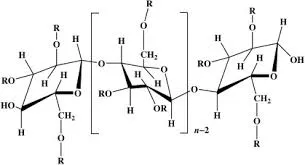
dec . 30, 2024 08:31 Back to list
Applications and Benefits of Hydroxypropyl Methylcellulose in Various Industries
Exploring Hydroxypropyl Methyl Cellulose (HPMC) Properties, Applications, and Benefits
Hydroxypropyl methyl cellulose (HPMC) is a versatile and widely utilized polymer derived from cellulose, the most abundant organic polymer on Earth. This non-ionic, water-soluble compound is primarily recognized for its thickening, gelling, and film-forming properties, making it an essential ingredient in various industries. In this article, we will explore the properties, applications, and benefits of HPMC, shedding light on its significance in modern science and technology.
Properties of HPMC
HPMC is characterized by its white, odorless powder form, which is hygroscopic and soluble in cold and hot water. The degree of substitution—that is, the extent to which the hydroxyl groups in cellulose have been replaced by hydroxypropyl and methoxy groups—affects its properties, including viscosity and solubility. These variations allow for the customization of HPMC formulations to meet specific needs in different applications.
The viscosity of HPMC can range from low to high molecular weights, allowing it to serve multiple functions, such as a thickening agent in liquids or a binder in solid formulations. Additionally, its ability to form films makes HPMC an excellent candidate for coatings and protective layers, enhancing both stability and performance in various end products.
Applications of HPMC
HPMC finds extensive applications across various industries due to its unmatched properties. Some of its prominent uses include
1. Pharmaceutical Industry HPMC is widely used as an excipient in drug formulations, serving as a binder in tablets, a coating agent, and a controlled-release matrix for medications. Its compatibility with various active pharmaceutical ingredients enhances drug stability and bioavailability.
2. Food Industry In food processing, HPMC acts as a thickener, emulsifier, and stabilizer, contributing to the texture and consistency of products like sauces, dressings, and ice creams. It is also used in gluten-free baked goods to improve the texture and moisture retention.
3. Construction Materials In the construction sector, HPMC is a critical additive in cement-based products such as mortars and plasters. It improves workability, water retention, and adhesion to surfaces, ensuring better performance and durability of construction materials.
hydroxypropyl methyl cellulose hpmc

4. Cosmetics and Personal Care HPMC is commonly employed in cosmetics and personal care products as a thickening agent and stabilizer in creams, lotions, and gels. Its film-forming capabilities also enhance product adherence to the skin, improving the overall user experience.
5. Industrial Applications Beyond consumer goods, HPMC is utilized in various industrial processes, including textile and paper manufacturing, where it serves as a sizing agent and a binder that improves the quality and strength of finished products.
Benefits of HPMC
The benefits of HPMC are manifold, contributing to its popularity in numerous applications
- Biocompatibility HPMC is derived from natural cellulose, making it biocompatible and non-toxic, which is particularly important in pharmaceutical and food applications.
- Versatility With its customizable properties, HPMC can be tailored for specific applications, making it an adaptable ingredient for formulators across different industries.
- Enhanced Stability Its ability to stabilize emulsions and prevent phase separation improves the shelf life and efficacy of various products.
- Environmentally Friendly As a cellulose derivative, HPMC is more sustainable than many synthetic polymers, underscoring its appeal in eco-conscious formulations.
Conclusion
Hydroxypropyl methyl cellulose is an invaluable compound with a wide array of applications and benefits. Its unique properties allow for its effective utilization across various industries, contributing to advancements in pharmaceuticals, food production, construction, cosmetics, and more. As research continues to explore and expand its potential, HPMC will undoubtedly remain a key ingredient in the formulation of innovative products that meet consumer needs while promoting sustainability. Whether improving drug delivery systems or enhancing the texture of food products, HPMC stands out as a versatile and effective solution in modern formulations.
-
Versatile Hpmc Uses in Different Industries
NewsJun.19,2025
-
Redispersible Powder's Role in Enhancing Durability of Construction Products
NewsJun.19,2025
-
Hydroxyethyl Cellulose Applications Driving Green Industrial Processes
NewsJun.19,2025
-
Exploring Different Redispersible Polymer Powder
NewsJun.19,2025
-
Choosing the Right Mortar Bonding Agent
NewsJun.19,2025
-
Applications and Significance of China Hpmc in Modern Industries
NewsJun.19,2025







